Italy, called the Enotria by the ancient Greeks (= “land of wine”), continued to be its homeland even in the Middle Ages, but the transition from Roman times was certainly not easy (as I have already told here). Already from the end of the Roman Empire, there was a generalized political crisis, with wars and invasions, which was also reflected in the viticulture crisis. The cultivation of the vine requires high specialization, as well as constant and expensive care for almost the year, so it suffers more than many other crops in times of instability.
Gregory the Great wrote in the 6th century that in Italy “eversae urbes, castra eruta … nullus terram nostram cultor inhabitat”: “the cities are destroyed, the castles demolished, … the lands deserted by farmers”. The production of wine therefore dropped significantly, albeit in a different way in different European areas.
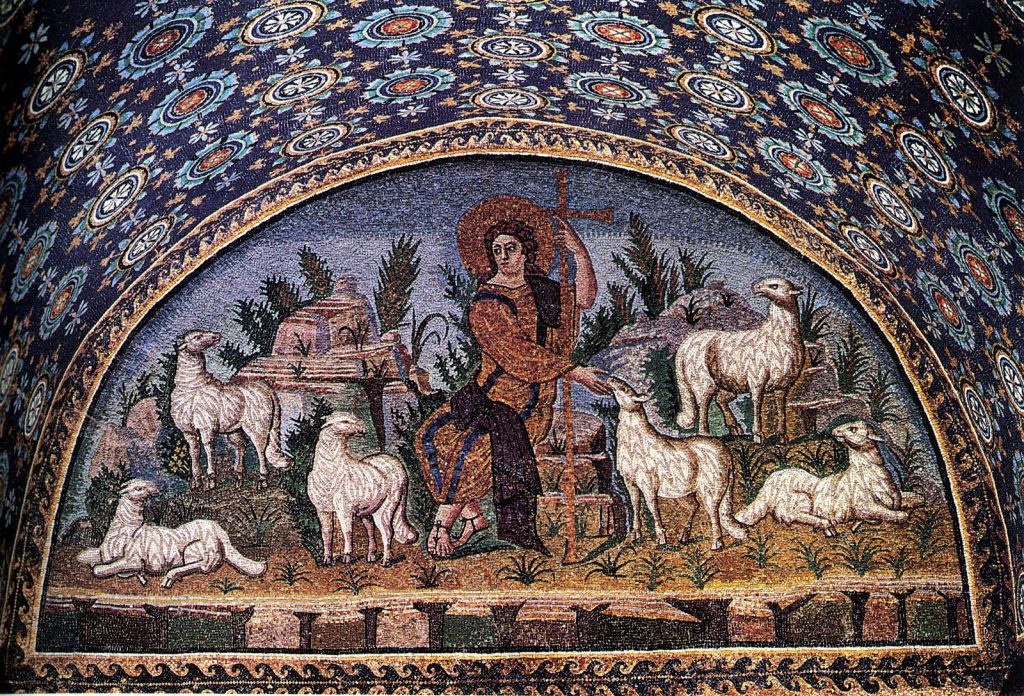
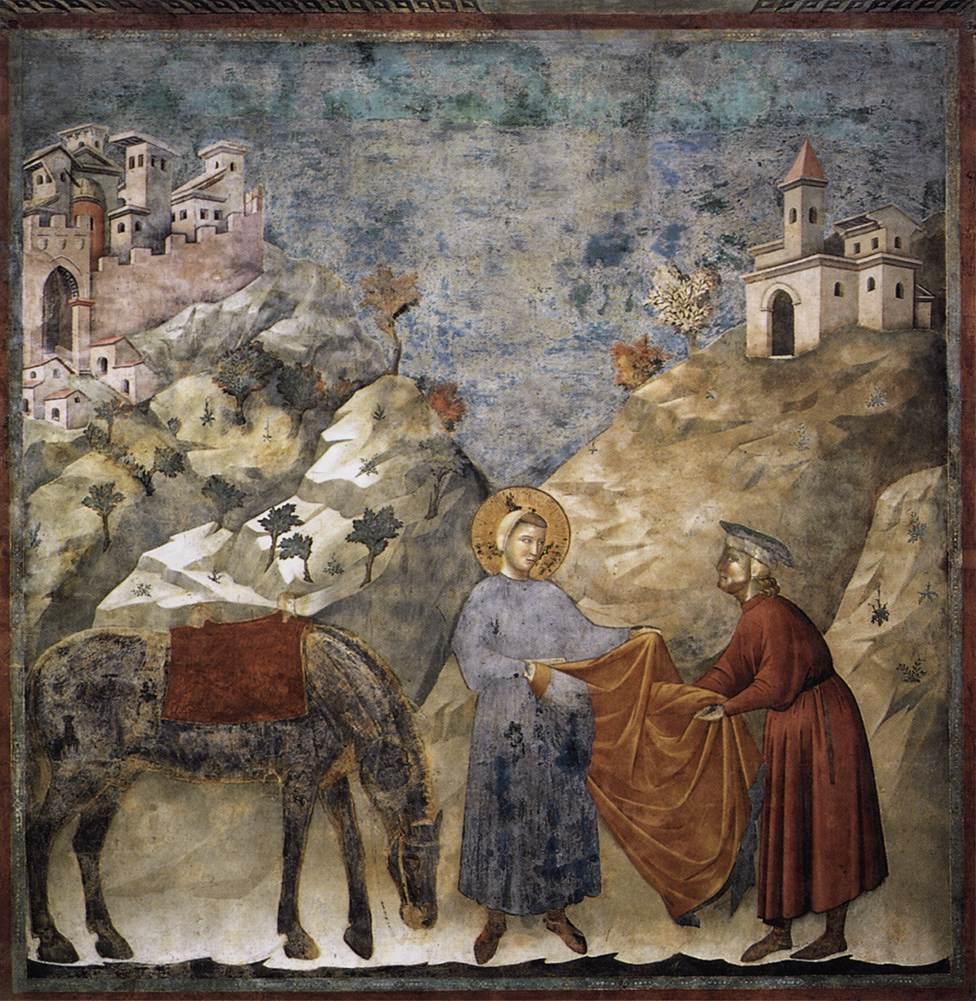
In general, the reduction in production made the wine a product almost exclusively of the rich and powerful, as in very ancient times. The mass of the people partly turned to poorer alcoholic products, obtained by fermenting the available fruits, such as apple, fig, carnelian, rowan, blackberry, medlar, etc. As mentioned in the previous post, the refined Roman production techniques, both viticultural and enological, were lost, as well as knowledge in many other fields. In the Middle Ages something then re-emerged, as evidenced by the agrarian treatise by Pietro de’ Crescenzo from Bologna (1304). Most of this knowledge will be regained more later.
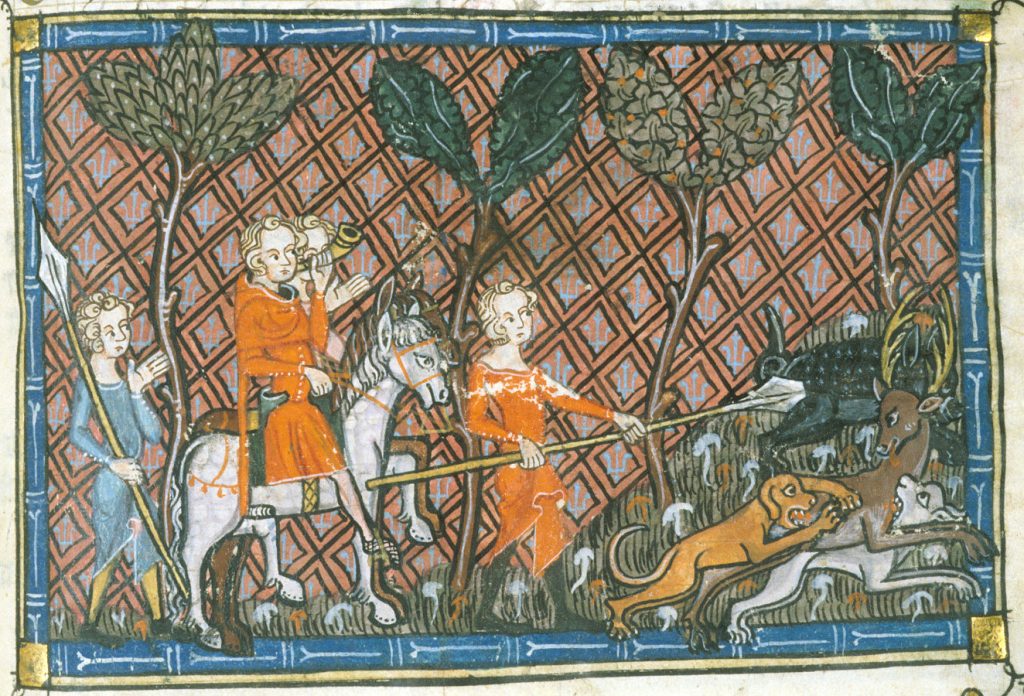
The Christian religion played a great role in this complicated transition. The wine was used in religious rites since ancient times but in Christianity it assumed an importance as perhaps never before. The Mass took shape precisely in this period and in the Eucharistic rite the act of Jesus Christ of the Last Supper was repeated (“This is my body, this is my blood“). The Middle Ages was a period very rich in symbolism: the bread was also a symbol of active life, the wine symbolized contemplative life, that is, the ability to know the essence of things, a virtue that God has granted only to human beings among all his creatures. In any case, wine became a fundamental raw material for mass and its production was therefore indispensable for every church and every convent. The production of Mass wine was tried everywhere, even where the climatic conditions were prohibitive or otherwise difficult.
The miraculous wine. The wine also played a very important role in the many miracles attributed to medieval saints. It is wrotten in the book “Tractatus de miraculis S. Francisci” (Treatise on the miracles of St. Francis) by Tommaso da Celano (1247-1257): “When he was at the hermitage of St. Urbain, the blessed Francis was gravely sick; he asked for some wine with dry lips, they told him there was none. He then asked some water and, when they brought it to him, he blessed it with a sign of the cross. Immediately, the water lost its flavor, and took another. What before was pure water became excellent wine, and what poverty could not, sanctity provided. After drinking it, that man of God recovered very quickly and as the miraculous conversion of water into wine was the cause of the healing, so the miraculous healing testified to that conversion.”
The gravestone of a 9th-century abbot from Milan reads: “Templa, domos, vites, oleas, pomeria struxit“, that is, “he built palaces and houses, planted vines, olive trees and fruit trees”. The monastic orders and bishops dealt abundantly with viticulture, not only for liturgical purposes, but also to have this drink as a sign of hospitality towards illustrious guests (or not). Around the year one thousand, the invasions and wars eased and civilized life began to regroup. The vineyards also extended to the nascent new political order, made up of princes and lords, by imitation of the Church, by prestige and to honor the guests.
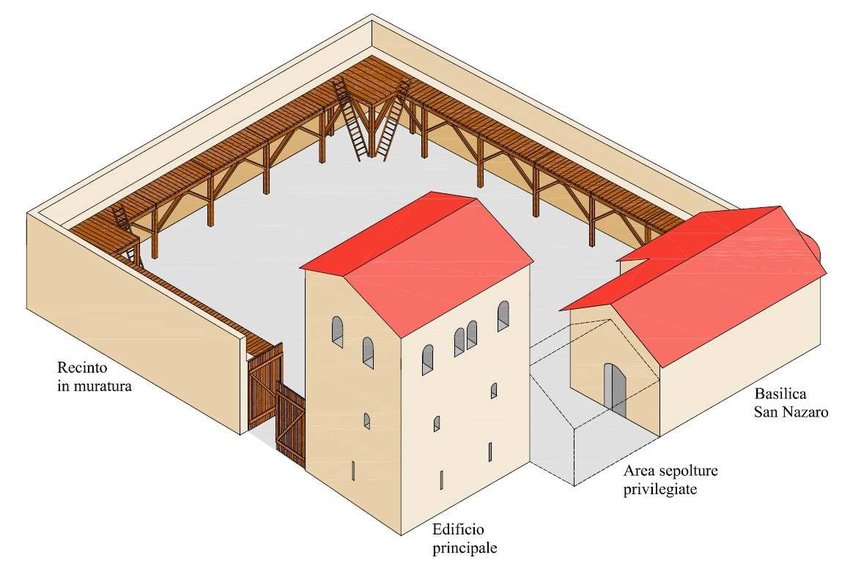
The reorganization of the countryside often restarted from the ancient Roman villae, where the invader, the new lord, settled. In Lombard and Byzantine times, the old villa, which has now become a fortified farmhouse (castrum), was the center of the new territorial lordship, called curtes or domuscultae or massae, … depending on the different areas of Italy. It was the place of residence of the lord or of his local administrator or of the ecclesiastical power. The castrum formed the pars dominica (the part of the lord), together with a church and directly managed agricultural areas, worked by non-free servants. They included cultivated fields, pastures, specialized crops such as vineyards or orchards, as well as particular resources such as mills, ponds, etc. The second element of the curtis was constituted by the pars massaricia, that is the farms cultivated by dependent peasants, required to pay taxes and work also in the pars dominica. We speak of the feudal system, very similar to that of Late Roman Empire (see here)
Another religion, Islam, which was born in this period (7th century AD), instead led to the disappearance of wine production in all those Mediterranean countries that came under its influence. It seems that only a small production made for pharmaceutical purposes but also for clandestine consumption, more or less tolerated by the authorities, survived. Moreover, the Christian and Jewish communities often maintained the possibility of producing wine in derogation, with payment of a tax. A particular case seems to be represented by Sicily, whose Arab invasion began in 827 and lasted until the beginning of the Norman conquest, in 1061. A recent research has revealed that the production of wine in the Arab Sicily not only continued but that it even increased, compared to the previous period. It is not known if the Sicilian Arabs produced or drank wine. Almost certainly, the numerous Christian communities that stubbornly opposed Islamization did it. However, it has been ascertained that there was a significant trade in Sicilian wine in the Mediterranean during the period of Arab domination.
However, in general, in the early Middle Ages a new geography of wine was born, defined more or less by the borders of Christianity, with a center of gravity a little more shifted from the Mediterranean towards the heart of Europe.
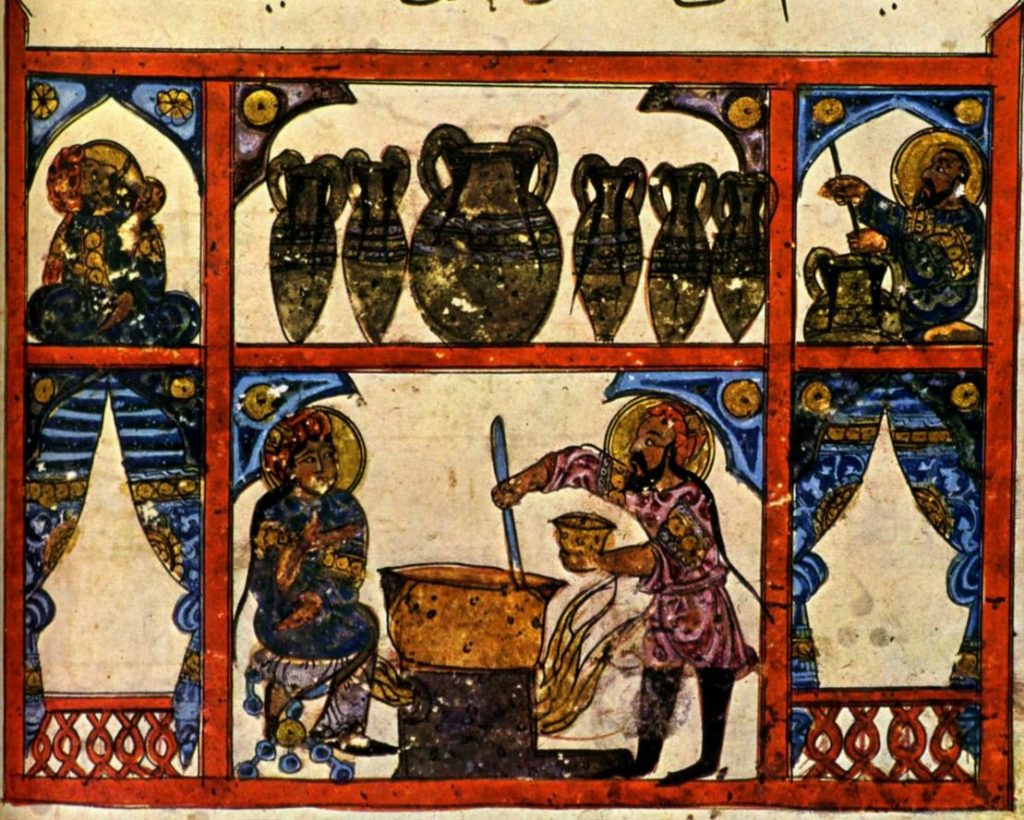
The center of agricultural knowledge was the Arab world int he Early Middle Ages, as in many other fields. Among the many treatises on agriculture, the one considered to be the most important was written by Ibn al-Awwam in the 12th century (“Book of Agriculture”). He was able to merge the legacy of the knowledge of the Romans, especially of Columella, with those of his time. However, he does not speak of wine, given the Koranic prohibition of alcoholic beverages. He only mentions the cultivation of grapes, for fresh and dried consumption. The cultivation is described in the two usual forms that we have already learned about, spread throughout the Mediterranean by the Romans: the low vine, cultivated as sapling without support, sometimes in holes or with poles, and the high one, often “married” to other fruit trees or pergolas.
If these indications are valid in general, there are also important differences between the Italian world of wine and that of more central and northern Europe. Where the climatic conditions were more difficult, the production of wine was more expensive and complicated, so for centuries viticulture remained almost the exclusive prerogative of ecclesiastics or lords. On the other hand, thanks to our Mediterranean climate, the winegrowing remained notably widespread even in the peasant world, because it was much more spontaneous and easier to manage. For example, Grasso and Fiorentino (2012) examined the archaeo-botanical remains of vine seeds in 39 medieval archaeological sites throughout Italy, from the 6th to the 15th century. AD They found evidence in almost all of them, not only in monasteries but also in villages, even in the most ancient centuries.
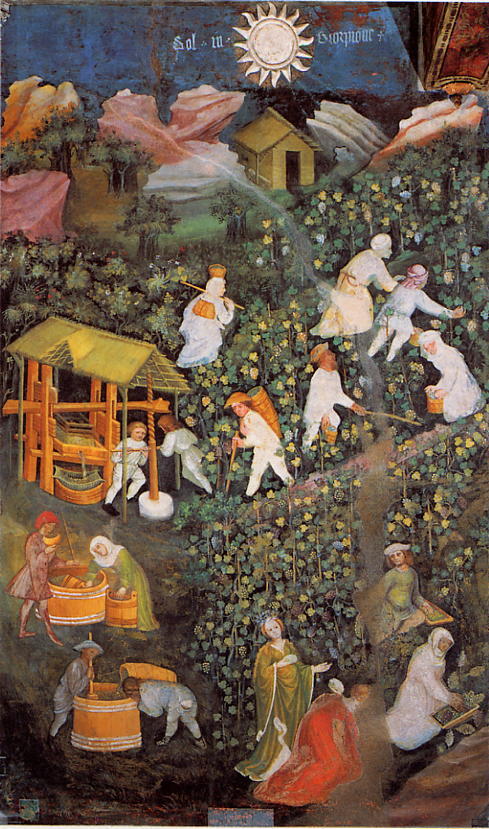
The viticulture in Italy was certainly reduced but not as dramatically as elsewhere. We can also think of a patchy situation, where some areas suffered more and others instead had more continuity with the past. For example, in the sixth century AD, Cassiodorus, minister of the Gothic king Theodoric, testifies in a letter to the quality of the wines produced by the peasants of the hills near Verona, in particular the acinaticum wine, a passito wine which he describes as follows: “A very rich set on the royal tables is praised as an ornament of the State […] and, therefore, the wines that the fertile Italy produces in a singular way must be procured … This is a very pleasant wine, regal in the color, singular in the flavor. […] Its sweetness is felt with ineffable delicacy; its concentration receives vigor from I don’t know what force; its density is incredible, so that you would say it is a fleshy liquid or a drink to be eaten.“
The “dead’s thirst”. The wine stood between pleasure and religion for the people of the Middle Ages, between earthly and afterlife. This conception is magnificently exemplified in the Facezia XXX of the “Mottos and Jokes” by the Priest Arlotto (1484). One day, at dawn, the priest is talking to an innkeeper at the Uccellatoio hill (near Florence), when a panting man approaches and asks him to offer him some wine: “For Goodness sake, pay me a half-pitcher because I am very thirsty“. Surprisingly, the priest Arlotto recognizes the man as the famous humanist Leonardo Bruni from Arezzo, and is amazed by his anxiety and such an early hour. Bruni replies: “Don’t you see that I am dead? I must walk away and I cannot stay with you. Don’t you see my problem: I am so thirsty and I have no money to pay for a little wine?“. Then, the priest asks him amazed what happened his wealth, his science, his illustrious fame … In short, he argument about the transience of earthly goods. Bruni’s answer is obviously that nothing remains after death, that it is wise to enjoy life in moderation and also do good. The story shows the dead as a very anguish man, disoriented in front of an unknown journey. He dwells on his life, he is afraid for the divine judgment that is coming. He is in a hurry, cold but he makes very thirsty at the same time. The meeting between the living and the dead man takes place at dawn, on a road on the top of a hill, in an ordinary but at the same time supernatural situation, rich in symbolism on the theme of transit. As the historian Franco Cardini tells us, the “dead’s thirst” is a theme that has ancient roots in the Mediterranean area. In various civilizations, particularly those of arid areas, where the suffering of thirst is well known, it was believed that the dead had difficulty in leaving life and suffered from a sort of thirst, that is, the urge to move on, to die permanently, to return into the earth. They need the living to help them die, by quenching their thirst. The ancient Greeks poured water into the crevices of the tombs in the Hydrophoria feast. In the Anthesteria festival, it was believed that the first rains of spring quench the thirst of the dead. I also remember you the Gospel parable of the poor Lazarus and the rich man, who gives nothing to the beggar of the leftovers of his rich table. After death, Lazarus goes to heaven and the rich man burns in the hellfire. The damned invokes Abraham to send Lazarus to at least dip his finger in the water to relieve his terrible thirst. However, the water is more linked to baptism in Christianity. The last drink, in continuity with the classical world, is instead the last glass of wine of farewell from the friends, therefore also the last drink of the funeral wake (or banquet), as well as the comfort of the Eucharist. The priest Arlotto offers the dead man, tired and frightened, the warmth of charity and of the last glass of wine, which gives him the strength and courage for his difficult journey.
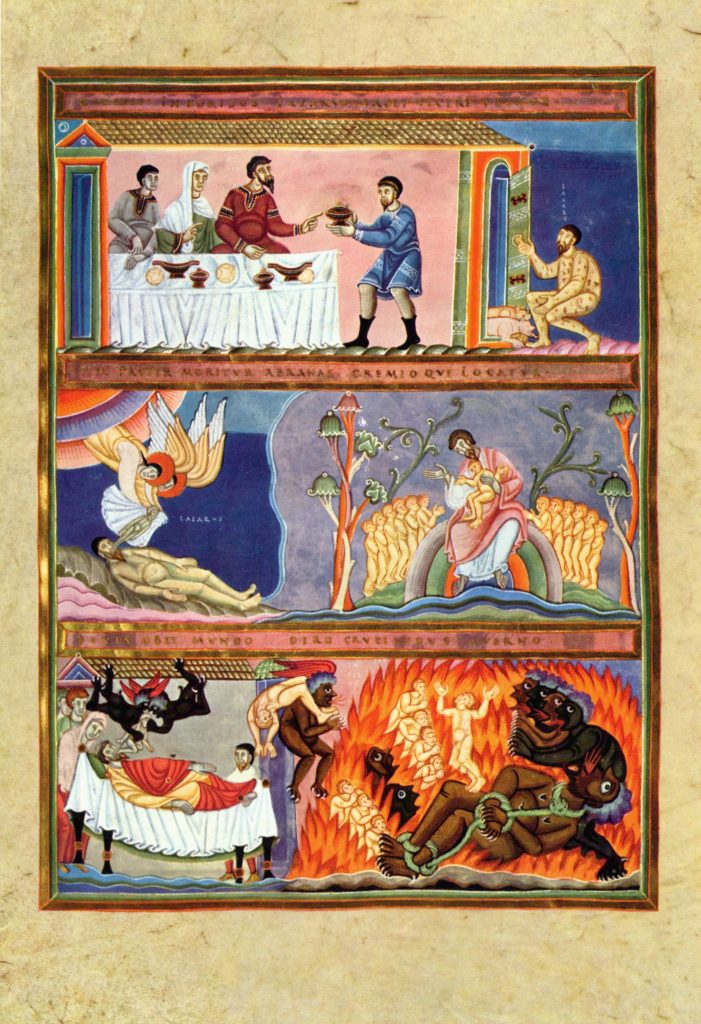
To be Continued …
Bibliography:
Prof. Alfonso Marini (AA 2020-2021) Dispense del corso di storia medievale.
Pini, Antonio Ivan (2003) Il vino del ricco e il vino del povero. In: La civiltà del vino. Fonti, temi e produzioni vitivinicole dal Medioevo al Novecento. Atti del convegno (Monticelli Brusati, Antica Fratta, 5-6 ottobre 2001). Centro culturale artistico di Franciacorta e del Sebino, Brescia, pp. 585-598.
Antonio Saltini (1998), Per la storia delle pratiche di cantina (parte 1) enologia antica, enologia moderna: un solo vino, o bevande incomparabili? In Rivista di Storia dell’Agricoltura n.1, giugno 1998.
Branca Paolo (2003) Il vino nella cultura arabo-musulmana. Un genere letterario… e qualcosa di più. In: La civiltà del vino. Fonti, temi e produzioni vitivinicole dal Medioevo al Novecento. Atti del convegno (Monticelli Brusati, Antica Fratta, 5-6 ottobre 2001). Centro culturale artistico di Franciacorta e del Sebino, Brescia, pp. 165-191.
Anna Maria Grasso, Girolamo Fiorentino (2012) Archeologia e storia della vite e del vino nel medioevo italiano. Il contributo dell’archeobotanica e di nuove metodologie di analisi integrate per la caratterizzazione varietale applicate ai contesti archeologici della Puglia meridionale. 2012, VI Congresso Nazionale di Archeologia Medievale
AAVV (1988) Il vino nell’economia e nella Società italiana medioevale e moderna. Convegno di Studi Greve in Chianti, 21-24 maggio 1987 Firenze, in Quaderni della Rivista di Storia dell’Agricoltura, Accademia dei Georgofili Firenze.
Emilio Sereni (1961), Storia del paesaggio agrario italiano, Editori Laterza.
Pietro Stara (2013), Il discorso del vino – origine, identità, come problemi storico-sociali, ed. Zero in Condotta.
https://www.agi.it/cultura/news/2021-02-24/islam-sicilia-vino-archeologia-11540051/